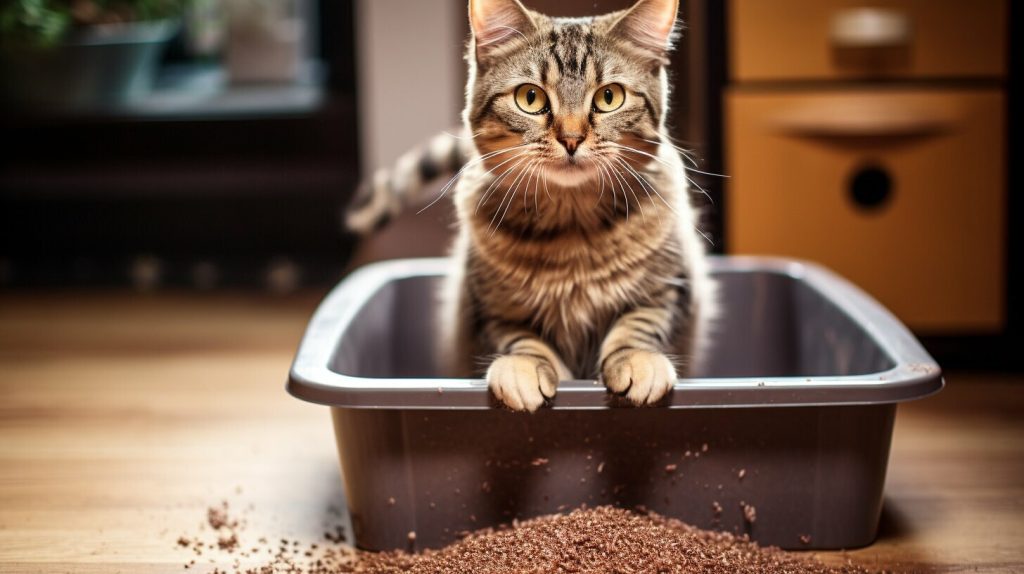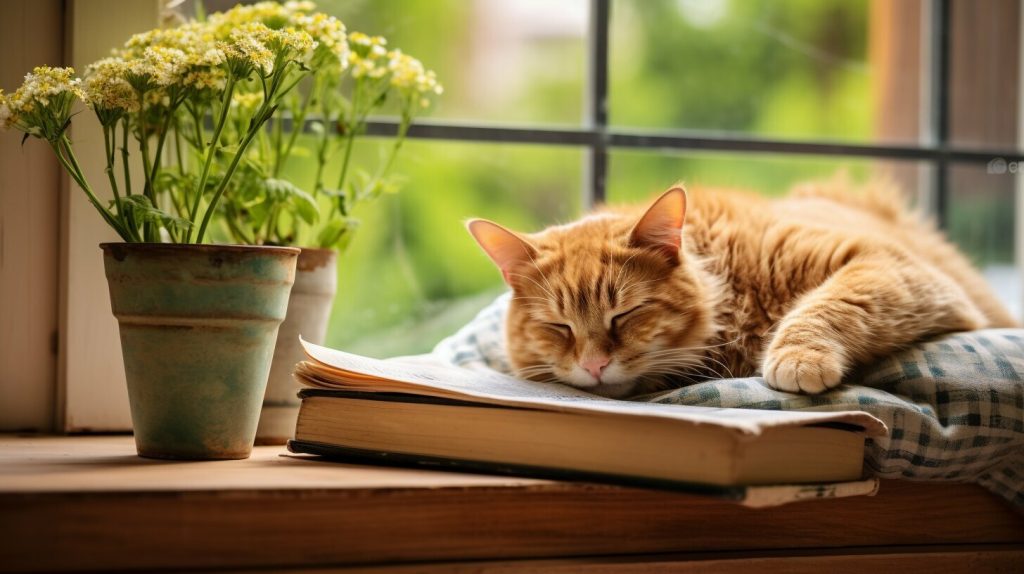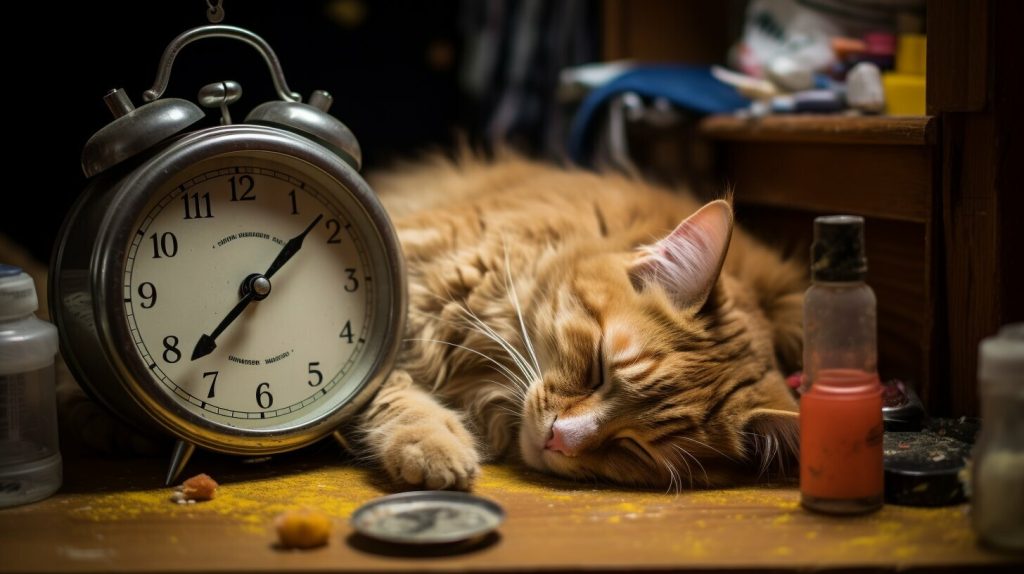Last Updated on September 22, 2023
As a cat owner, you may be curious about how often your furry friend visits the litter box in a day. While there is no single answer to this question, understanding your cat’s bathroom habits can provide valuable insights into their overall health and well-being.
In this section, we will explore how often cats typically urinate in a day and what factors can influence their bathroom routine.
- 1 Key Takeaways:
- 2 Understanding Feline Urinary Habits
- 3 Factors Affecting Cat Urine Frequency
- 4 Normal Cat Voiding Patterns
- 5 Abnormal Cat Urination Habits
- 6 Conclusion
-
7
FAQ
- 7.1 Q: How often do cats pee in a day?
- 7.2 Q: What is considered normal for a cat’s bathroom routine?
- 7.3 Q: Do male and female cats have different urination habits?
- 7.4 Q: Can stress affect a cat’s urine frequency?
- 7.5 Q: When should I be concerned about my cat’s urination habits?
- 7.6 Q: How can I encourage my cat to drink more water?
Key Takeaways:
- Cats have unique bathroom habits that can vary from one individual to another.
- Understanding your cat’s typical urine frequency can help you recognize any potential health issues.
- If you notice any abnormal changes in your cat’s urination habits, consult with a veterinarian.
Understanding Feline Urinary Habits
As a cat owner, it’s important to have a basic understanding of your feline companion’s bathroom habits, including their frequency of urination. While every cat is unique, there are general patterns that are considered normal for most cats.
Cats typically urinate 2-4 times per day, although this can vary depending on several factors, such as age, diet, and activity level. For example, kittens may urinate more frequently than adult cats, and cats on a wet food diet may urinate more often than those on a dry food diet.
It’s important to monitor your cat’s urination habits and look out for any changes in frequency or behavior. An increase or decrease in urination frequency, straining to urinate, or urinating outside the litter box can indicate a potential health issue, such as a urinary tract infection or bladder stones.
Understanding Feline Urinary Tract Anatomy
To better understand your cat’s urinary habits, it can be helpful to know a little about their urinary tract anatomy. A cat’s urinary tract includes the kidneys, ureters, bladder, and urethra. The kidneys filter waste from the blood and produce urine, which travels down the ureters and into the bladder. When the bladder is full, the cat will feel the urge to urinate, and the urine will be expelled through the urethra.
Unlike humans, male cats have a longer and narrower urethra, which makes them more prone to urinary tract obstructions. Female cats are more prone to urinary tract infections due to their short urethra. Understanding these differences can help you recognize potential issues and take action promptly.
Monitoring Your Cat’s Urinary Habits
Keeping track of your cat’s urination habits is an essential part of responsible pet ownership. This includes monitoring the frequency, volume, and appearance of their urine. If you notice any changes, such as increased or decreased frequency, discolored or bloody urine, or straining to urinate, it’s important to consult your veterinarian right away.
Your vet may recommend diagnostic tests, such as a urinalysis or bloodwork, to determine the underlying cause of the changes in your cat’s urinary habits. Treatment options may include medication, dietary changes, or surgery, depending on the diagnosis.
By understanding your cat’s urinary habits and being vigilant for any changes, you can help ensure that they remain healthy and happy for years to come.
Factors Affecting Cat Urine Frequency
As pet owners, it’s essential to understand the factors that can impact our cat’s urinary habits. There are multiple reasons why your feline friend may urinate more or less frequently than usual.
Here are some of the most common factors that can influence a cat’s urine frequency:
- Age: Young kittens and older cats may need to use the litter box more frequently than adult cats.
- Diet: A cat’s diet can impact their urine frequency. For example, cats who primarily eat dry food may require more water and therefore, may urinate more frequently than cats who eat wet food.
- Health Conditions: Certain health conditions, such as urinary tract infections or bladder stones, can cause cats to urinate more often.
- Medications: Some medications can affect a cat’s urinary habits, causing them to urinate more or less frequently.
- Stress: Cats who experience stress or anxiety may urinate more frequently as a coping mechanism.
Keep in mind that these factors can vary from cat to cat. It’s essential to monitor your cat’s urination habits and consult with your veterinarian if you notice any changes or abnormalities.
“A cat’s urinary habits can provide clues about their overall health. Understanding what is normal for your feline friend can help you identify potential problems early on.”
Normal Cat Voiding Patterns
As mentioned earlier, cats generally follow a consistent voiding pattern. This means that they tend to urinate and defecate at the same times each day. For example, a cat may urinate after waking up in the morning, after meals, and before going to bed.
It’s important to note that the frequency of urination can vary based on factors such as age, diet, activity level, and health conditions. However, a typical healthy adult cat will urinate 2-4 times per day.
If you notice a significant change in your cat’s voiding pattern, it may be an indication of an underlying health issue. For example, frequent urination could be a sign of a urinary tract infection or kidney disease, while infrequent urination could indicate dehydration or urinary blockage.
Other signs that your cat’s voiding pattern may be abnormal include straining to urinate, blood in the urine, or urinating outside of the litter box. If you notice any of these behaviors, it’s important to consult with a veterinarian to determine the underlying cause and develop an appropriate treatment plan.
In conclusion, understanding your cat’s normal voiding pattern is key to monitoring their overall health. If you notice any changes in your cat’s urination frequency or behavior, don’t hesitate to seek veterinary advice.
Abnormal Cat Urination Habits
If you notice your cat urinating more or less frequently than usual, this can be a sign of an underlying health issue. Here are some abnormal urination habits to watch out for:
- Urinating outside the litter box: If your cat is suddenly avoiding their litter box and urinating on carpets, floors, or other surfaces, this could be a sign of a urinary tract infection or a behavioral issue.
- Straining to urinate: If your cat is frequently going to the litter box but only producing small amounts of urine and appears to be straining, this could be a sign of a blockage in the urinary tract, which is a medical emergency. Seek veterinary attention immediately.
- Blood in urine: Seeing blood in your cat’s urine can indicate a urinary tract infection, bladder stones, or even bladder cancer. It’s essential to have your cat examined by a veterinarian if you notice blood in their urine.
If you observe any of these abnormal behaviors, it’s crucial to seek veterinary attention promptly. Early detection and treatment of urinary issues can prevent more severe health problems from developing.
Conclusion
In conclusion, understanding your cat’s urination habits is an essential part of caring for your feline companion. By monitoring your cat’s bathroom routine, you can quickly identify any potential health problems. Remember that cats have unique bathroom habits, so what may be considered normal for one cat may not be normal for another.
If you notice any abnormalities in your cat’s urine frequency or urination habits, it is essential to consult your veterinarian. Catching any potential health issues early on can significantly increase the chances of successful treatment.
In summary, maintaining a close eye on your cat’s bathroom schedule can provide valuable insights into their overall health and well-being. By being proactive, you can ensure that your feline friend stays healthy and happy for years to come.
FAQ
Q: How often do cats pee in a day?
A: Cats typically pee 2-4 times a day. However, this can vary depending on factors such as age, diet, and overall health.
Q: What is considered normal for a cat’s bathroom routine?
A: A cat’s normal bathroom routine includes urinating 2-4 times a day and having regular bowel movements. Any significant changes in frequency or difficulty should be monitored and discussed with a veterinarian.
Q: Do male and female cats have different urination habits?
A: Male and female cats generally have similar urination habits. However, male cats may mark their territory more frequently by spraying urine, especially if they are not neutered.
Q: Can stress affect a cat’s urine frequency?
A: Yes, stress can affect a cat’s urine frequency. Cats may urinate more frequently or have difficulty urinating when they are stressed. It’s important to provide a calming environment and address any underlying causes of stress.
Q: When should I be concerned about my cat’s urination habits?
A: You should be concerned if your cat suddenly starts urinating more frequently, has difficulty urinating, shows signs of pain or discomfort while urinating, or has blood in their urine. These could be signs of a urinary tract infection or other health issues and require veterinary attention.
Q: How can I encourage my cat to drink more water?
A: You can encourage your cat to drink more water by providing fresh water in multiple locations throughout your home, using a pet fountain, or adding wet food to their diet. It’s important to ensure your cat stays hydrated to maintain a healthy urinary system.













